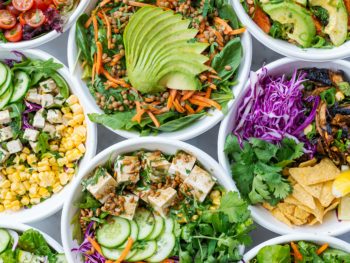Below is my blog for Huffington Post, “A prize may encourage us to eat less.”
You can also read it here.
Portion sizes have grown over the past 50 years, and so have our waistlines. As I found in my portion-size research, the fact that Americans are eating too much is a perfectly logical explanation to explain the current U.S. obesity crisis. While there is some good news on the horizon suggesting that we are finally beginning to eat less, we still have a long way to go.
Researchers from University of Southern California (USC) conducted several interesting experiments encouraging both kids and adults to select smaller portions. The results, published in the Journal of Experimental Psychology: Applied, found that people will often choose a smaller portion when offered some kind of incentive or prize.
The researchers conducted three experiments, all offering some kind of incentive to choose the smaller portion.
As discussed in USC News, “In the first experiment, sixth-graders were offered the choice between a 9-inch sandwich and a 4.5-inch sandwich and inexpensive earbuds. The majority chose the latter. In a second experiment with adults, half-sized portions were paired with the chance to win a $100 Amazon gift card or the chance to win 10,000 frequent-flyer miles accepted by all major airline loyalty programs. The majority chose the incentive and made that choice consistently over three days. In a third experiment, the researchers got similar results in a real restaurant setting with customers who came in with the intention of buying a full-sized sandwich, but opted for the half-size and a chance to win a $10 lottery.”
As you can see, the incentive offered does not need to be anything fancy or expensive. And the subjects consistently chose the smaller portion-plus-incentive option even when it was priced the same as the larger portion.
And, best of all, at least from a public health perspective, the smaller portion will not leave you hungry.
The researchers tracked total calories consumed in the second experiment and found that subjects ate fewer calories when compared to their baseline day.
The research findings could be a great way to help reduce our calorie intake and fight obesity along with its associated health care costs.
USC marketing professor Deborah MacInnis wrote me in an email: “Incentivizing consumers to choose smaller portion sizes not only offers opportunities for lower daily calorie intake, it also has the potential to help consumers realize that smaller sized portions won’t leave them hungry.”
She also wrote, “As consumers, we value our freedom of choice. Laws and regulations remove freedom of choice and can backfire by creating resistance and reactance. Giving consumers the opportunity to choose between a full sized version and a smaller version with an uncertain incentive preserves freedom of choice while motivating policy-consistent (and health promoting) behaviors.”
Here are some take away messages.
1. As a nutritionist and portion-size researcher, what I found most interesting was that the subjects were not hungry after choosing the smaller portion. This lesson applies to all of us. We can usually be satisfied with less food. We can always order more food later if we are still hungry.
2. Consider leaving over some food, wrapping up leftovers, or sharing an entree next time you visit your favorite restaurant.
3. How about treating yourself to a reward? Perhaps splurge on a massage if you choose the smaller portion.
4. If you are a parent, try encouraging your kids to choose the smaller — healthier — portion, by offering a small non-food prize or reward. Your kids will probably prefer the prize more than the extra food.
5. It may be economically feasible for the food industry to sell smaller portions. If you are a restaurant owner, consider adding some kind of small incentive encouraging diners to choose the smaller portion. Just be sure not to offer them a free dessert, which would defeat the whole purpose.
Want to learn some portion-control tips and tricks without the reward? I discuss them here.
Follow Dr. Lisa Young on Twitter: www.twitter.com/drlisayoung




